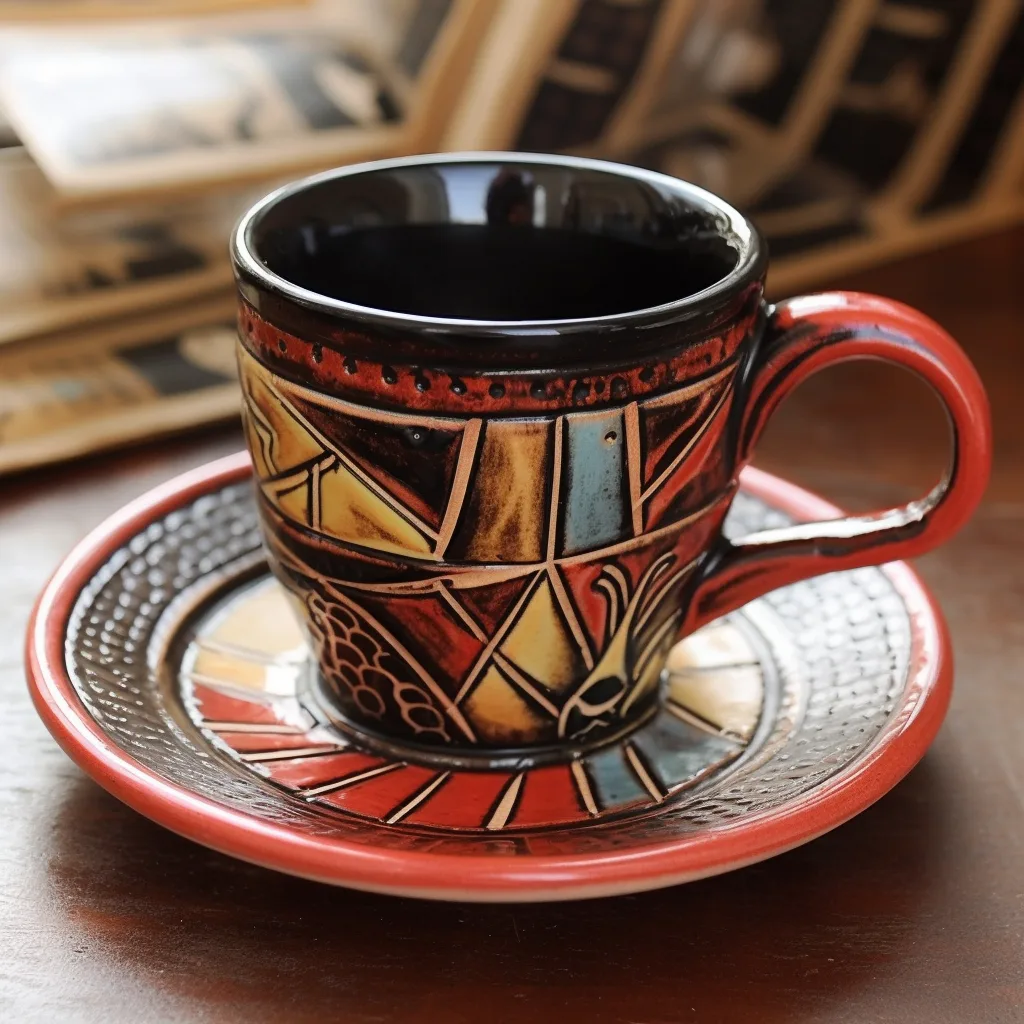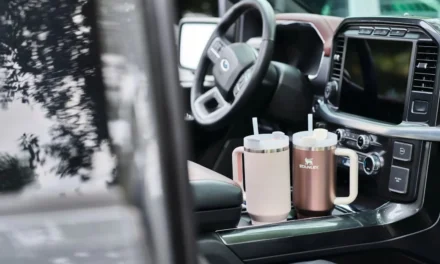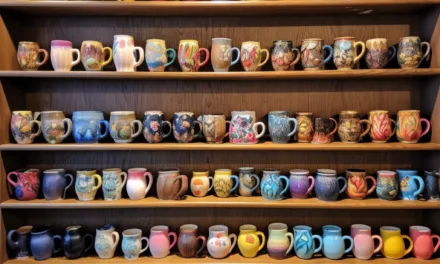As an Amazon Associate, we earn from qualifying purchases. We may also earn commissions if you purchase products from other retailers after clicking on a link from our site.
Ceramic coffee mugs are among the most popular choices for enjoying hot beverages, such as coffee, tea, or cocoa. They come in various shapes, sizes, colors, and designs, often adding personality and style to your kitchen or office. But are ceramic coffee mugs safe to drink from?
Ceramic coffee mugs are generally safe and non-toxic as long as they are made from high-quality materials and properly glazed and fired. However, some low-quality or vintage ceramic mugs may contain lead or cadmium that can leach into your coffee and cause health problems.
In this article, we’ll answer are ceramic coffee cups safe and give you some tips on choosing and using ceramic coffee mugs safely.
Are Ceramic Coffee Mugs Toxic?
Ceramic coffee mugs are generally safe and non-toxic as long as they are made from high-quality materials and properly glazed and fired.
Ceramic is a natural material that is composed of clay, water, and minerals. It is also non-reactive, meaning it’ll not absorb the flavor or odor of your drink. Even though ceramic mugs retain the heat of the drinks better than other materials, they are also microwavable.
However, not all ceramic coffee mugs are created equal. Some ceramic mugs may contain harmful substances, such as lead or cadmium, that can leach into your drink and cause health problems.
Lead and cadmium are heavy metals that are often used as additives in the glaze or paint of ceramic mugs to enhance their color, shine, or durability. These metals can be toxic if ingested in large amounts or over a long period of time.
They can cause symptoms such as:
- Nausea
- Vomiting
- Diarrhea
- Abdominal pain
- Memory loss
- Kidney damage
- Nerve damage
- Cancer
In addition to lead and cadmium, there are other harmful substances that can be present in ceramic mugs.
For example, some glazes may contain arsenic, which is a toxic metal that can cause serious health problems if ingested in high amounts over time. Arsenic exposure can lead to skin, lung, bladder, liver, and kidney cancers, as well as cardiovascular disease and diabetes.
Another potential hazard is the presence of bisphenol A (BPA) in ceramic mugs. BPA is a chemical used in the production of plastic and epoxy resins, which can be found in the lining of some ceramic mugs.
BPA can leach into hot liquids, especially if the mug is old, scratched, or cracked. BPA exposure has been linked to various health issues, including hormonal imbalances, infertility, obesity, and cancer.
To reduce the risk of exposure to harmful substances in ceramic mugs, it’s important to choose high-quality, food-safe mugs that are free from lead, cadmium, arsenic, and BPA.
Look for mugs that are labeled as “lead-free” or “food-safe” and made from materials such as porcelain, stoneware, or glass, which are less likely to contain toxic substances.
When using ceramic mugs, it’s also important to handle them with care and avoid exposing them to extreme temperatures or sudden changes in temperature.
Don’t use mugs that are chipped, cracked, or scratched, and don’t use them for purposes other than drinking beverages.
If you’re unsure about the safety of a particular ceramic mug, you can always test it for lead or other harmful substances using a home test kit or by consulting a professional.

Do Ceramic Coffee Mugs Contain Lead?
The answer to this question depends on several factors, such as the origin, age, quality, and condition of the ceramic mug.
Generally speaking, ceramic mugs made in the USA or Europe are more likely to be lead-free than those made in other countries, such as China or Mexico.
This is because the USA and Europe have stricter regulations and standards for the use of lead in ceramic products. However, this does not mean that all ceramic mugs from these regions are guaranteed to be lead-free. Some ceramic mugs may still contain trace amounts of lead that are below the legal limit but still pose a risk for sensitive individuals or children.
When it comes to ceramic mugs, the age of the mug is an important factor to consider in relation to lead content.
Older ceramic mugs, particularly those that are antique or handmade, are more likely to contain lead than newer ones.
This is because lead was a common additive in ceramic glazes and paints in the past before its harmful effects were known. Additionally, older ceramic mugs may have more cracks or chips that can expose the underlying clay or metal to your drink.
In addition to age, the quality and condition of the ceramic mug can also impact its lead content.
Ceramic mugs that are cheaply made or poorly glazed may have more defects or imperfections that can allow lead to leach into your drink.
Similarly, ceramic mugs that are damaged or worn out may have more cracks or chips that can increase the risk of lead exposure.
How To Test a Ceramic Coffee Mug for Lead
If you’re concerned about the possibility of lead in your ceramic coffee mug, there are ways to test it at home or by a professional.
One way is to use a home lead test kit that you can buy online or at a hardware store. These kits usually come with swabs that you can rub on the surface of your mug and see if they change color. However, it’s important to note that these kits may not be very accurate or reliable, as they may give false positives or negatives depending on the type and amount of lead present.
The SCITUS Lead test kit comes with 30 swabs that can show whether a coffee mug glaze contains lead in just 30 seconds. Simply dip it into distilled vinegar, wait for it to turn yellow, and rub it on your coffee cup. If the color changes to pink or purple, the glaze contains lead.
Another way is to send your ceramic coffee mug to a certified laboratory for testing.
This is a more accurate and reliable method but also more expensive and time-consuming. You will need to find a reputable lab that specializes in testing for lead in ceramics and follow their instructions on how to pack and ship your mug safely.
The lab will then use sophisticated instruments and methods to measure the amount of lead in your mug and send you a report with the results.
You can read more about buying the right ceramic coffee mug by reading How to Choose the Perfect Ceramic Coffee Mug (10 Tips).
Are Scratched Ceramic Coffee Mugs Safe?
Scratched ceramic coffee mugs may not be safe to drink from if they have cracks or chips that expose the underlying clay or metal to your drink. This can increase the risk of leaching harmful substances such as lead or cadmium into your beverage.
Scratched ceramic coffee mugs may also harbor bacteria or mold that can cause infections or illnesses.
Therefore, it’s advisable to avoid using scratched ceramic coffee mugs for drinking hot beverages.
You can either discard them or use them for other purposes, such as holding pens or plants. If you really love your mug and don’t want to part with it, you can try to repair it using food-safe epoxy glue or ceramic paint, but make sure you follow the instructions carefully and let it cure completely before using it again.
What Are the Benefits of Ceramic Coffee Mugs?
Ceramic coffee mugs are not only safe and non-toxic, but they also have some benefits that make them a great choice for drinking coffee. Here are some of them:
- Ceramic coffee mugs keep your coffee hot longer than other materials, such as glass or plastic. This is because ceramic is a good insulator that can retain heat for a longer period of time. So, you can enjoy your coffee at its optimal temperature and flavor without having to reheat it or add more hot water.
- Ceramic coffee mugs are also great for preventing lingering odors and tastes. Unlike plastic or metal, ceramic does not absorb any flavor or aroma from your drink, so you can switch between different types of coffee without affecting the taste.
- Ceramic coffee mugs are good for your health. According to a study by researchers at Pusan National University in South Korea, drinking coffee from a ceramic mug can reduce plaque formation and bacterial growth in your mouth compared to drinking from a plastic cup. This is because ceramic has antibacterial properties that can inhibit the growth of harmful bacteria that cause tooth decay and gum disease. Additionally, ceramic mugs don’t contain any harmful chemicals, such as BPA or phthalates, that are found in some plastic cups and can leach into your drink.
- Ceramic coffee mugs are also eco-friendly and sustainable. Ceramic is a natural material that is biodegradable and recyclable. It does not contain any harmful chemicals or plastics that can pollute the environment or harm wildlife.
- Ceramic mugs are durable and can last longer than other materials, so you don’t have to replace your mug as often. You can even find ceramic mugs that are made from recycled materials or are handmade by local artisans, making them a great choice for conscious consumers who want to support sustainable practices.
Final Thoughts
Ceramic coffee mugs are safe, non-toxic, and beneficial for drinking coffee. They keep your coffee hot longer, prevent lingering odors and tastes, reduce plaque and bacteria in your mouth, and are eco-friendly and sustainable. However, some ceramic mugs may contain lead or cadmium that can leach into your drink and cause health problems.
To avoid this, you should choose ceramic mugs that are made in the USA or Europe, or that have a lead-free certification.
You should also avoid using scratched or damaged ceramic mugs, as they can expose more clay or metal to your drink. You can test your ceramic mug for lead using a home test kit or a laboratory test.









